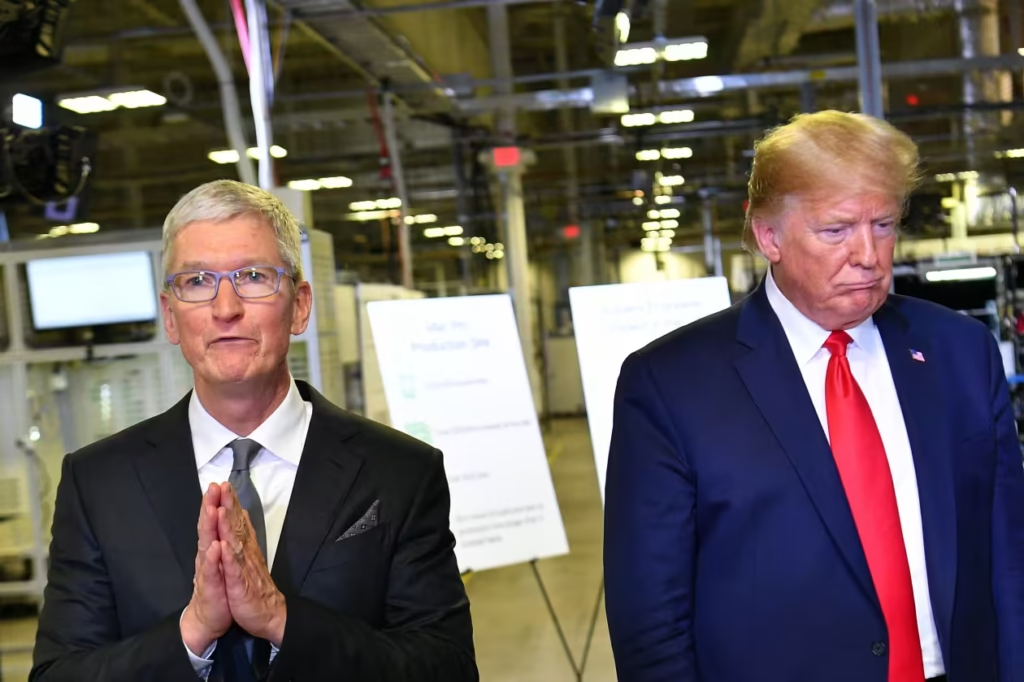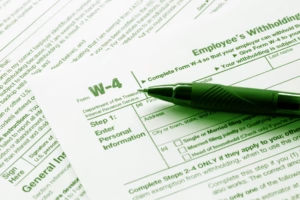Everyone who uses Apple agrees that it’s difficult to fathom exchanging a MacBook or iPhone for a Lenovo laptop or a Samsung smartphone. Despite the tariff commotion, that is likely Apple’s greatest advantage.
However, there has recently been pressure on Apple Inc.’s stock (AAPL). Apple shares have lost ground while major technology firms have surged back in May. This month, the stock has dropped 8% so far. Based on FactSet statistics, it’s the only one of the “Magnificent Seven” that has lost money over that time. It is also the group’s worst-performing stock, down 22% so far this year.
The panic about tariffs on Friday made things worse. Apple’s shares ended the day 3% lower, marking its eighth consecutive drop.
However, analysts aren’t backing down, and investors shouldn’t either, despite President Donald Trump’s threat on Friday to impose a 25% tariff on Apple if it didn’t move its manufacture to the United States. However, there is a warning attached to that point, which is equivalent to a pilot alerting passengers of impending turbulence. That also applies to Apple’s stock. Even if the brief travel may be unpleasant, the arrival is on schedule. Therefore, getting off midflight is generally not a good idea if you’re already invested.
Gil Luria, head of technology research at D.A. Davidson, said that over a three- to five-year period, there are many reasons to be optimistic about the company’s future prospects because the products are a part of an admirably sticky ecosystem. According to him, the services that Apple has added to its hardware will keep consumers coming back. According to Luria, it’s also true that many people who purchase an iPhone or other Apple device also frequently purchase a MacBook. To put it briefly, the recent decline in stock value does not reflect the situation of the company. The relationship between Trump and Tim Cook, the CEO of Apple, is more at question.
“If you get to a point where the president is posting in such a confrontational manner, that means the negotiation isn’t going well,” Luria added.
Although it’s a setback, it’s not severe enough to force Luria to reconsider his strategy for the business. He thinks there is still a potential that talks between Apple and the White House could prevent the worst, even if an additional 25% tariff would affect the company’s profits. An additional 25% tariff on Apple products would have a short-term negative impact on earnings. According to Luria, the expenses may be distributed by partially increasing prices and transferring some of the costs to suppliers of parts. Trump also mentioned that Samsung (KR:005930) and other smartphone manufacturers would also face 25% tariffs on devices manufactured abroad that are imported into the United States, so Apple wouldn’t be at a competitive disadvantage.
Ask the Moneyist: Is it wise to get an iPhone right now?
CFRA analyst Angelo Zino laughed and referred to the tariff threat as “noise,” saying it has no bearing on his opinion of Apple. “I don’t think you can take too much away from these headlines,” remarked the politician. He said that the most important lesson is that Cook’s connection with the president isn’t as strong as it once was. Cook was successful in obtaining a tariff exemption under the first Trump administration.
With a 12-month forward price-to-earnings ratio of roughly 26, Apple’s stock is now trading below its “Magnificent Seven” competitors, which include Tesla Inc., Amazon.com Inc., Microsoft Corp., and Nvidia Corp. However, with a two-year projected compound annual growth rate, or CAGR, of 5.1% through 2026, Apple may see the weakest sales growth of the group. According to Luria, all of it indicates that investors are highly optimistic about the company’s long-term potential, even in the face of slower sales.
When compared to the S&P 500 SPX, which has a forward P/E of 21.2 and a two-year anticipated sales CAGR of 5.6%, Apple’s stock is trading at a premium. At 26.8, Apple’s projected P/E is marginally lower than that of the S&P 500 information-technology sector. However, the IT industry’s two-year sales CAGR of 11.3% is more than double Apple’s.
Ted Mortonson, managing director at Baird, says Apple’s bigger problem is that Siri’s integration with Apple Intelligence has fallen behand. The company is at risk of losing market share to any contender able to release life-changing generative AI services. That’s something Mortonson believes could happen through Alphabet’s (GOOG) (GOOGL) Pixel phones or through Google’s partnership with Samsung Galaxy and the integration of generative AI into that smartphone.
That risk means he wouldn’t suggest investors be overweight the stock, and he believes a stock like Alphabet is a better bet given its cheaper forward P/E at 17.3 with a two-year estimated sales CAGR double Apple’s, at 10.7%.
The next important event for Apple will be its Worldwide Developers Conference, which kicks off on June 9. The company will have a chance to wow customers with any updates, particularly on Apple Intelligence. But until then, Luria believes, he said, that investors should suspend judgment about the stock.
Overall, investing is based on an individual’s risk tolerance. While Apple is still seen as a solid company, and a good stock to own, there may be better risk-reward opportunities elsewhere. As for investors who already own the stock because they like the company and believe in the business’s long-term prospects, panic selling based on negative headlines is never a good strategy. Instead, investors should focus on the company’s key drivers. And a big one right now is how well Apple can compete in generative AI services because that will help drive hardware sales and increase demand for Apple’s services segment, including cloud storage.





